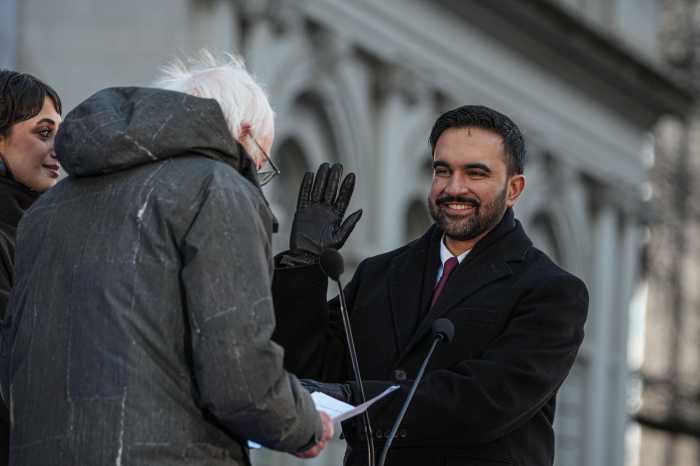Victory was fleeting for Michael Perlman, the 27-year-old chairman of Friends of the Ridgewood Theatre. That cold January day when the 94-year-old Ridgewood Theatre was designated an individual landmark by the New York City Landmarks Preservation Commission (LPC) signaled the beginning of yet another battle.
Perlman and fellow preservationists – not to mention legions of cinema enthusiasts – had lobbied long and hard for protection of the theater’s façade, ever since it closed suddenly in March of 2008. Even the grandson of renowned theater architect Thomas A. Lamb – the Ridgewood’s visionary – advocated for its preservation.
The theater is widely considered to be the longest continually-run movie house in New York and, by many accounts, United States history. So, naturally, after preserving its Indiana limestone and terracotta exterior, Perlman and his supporters were not about to sit back and watch a tenant demolish the ornate lobby.
The conundrum is that the LPC cannot vote on saving the Ridewood’s interior until a tenant or buyer has been secured and the building is open to the public. Buyers beware – Perlman has a plan for you.
“Time is of the essence to find an historically-sensitive tenant or buyer who will realize its [the theater’s] diverse contributions to Vaudeville and film history and really appreciate its irreplaceable craftsmanship,” Perlman said.
He added that Mario Saggese, one of the theater’s owners, applauded him at the LPC hearing and subsequently uncovered long-ago-forgotten ornamentation under ceiling panels inside the theater. Saggese, who did not return a call by press time, vowed at the time to install three modern screens and surround-sound on the Ridgewood’s upper floors. The Ridgewood’s lobby would be preserved, he assured Perlman.
But in this economy, Perlman lamented, those plans have been put on hold. Sparking any interest, let alone finding an organization that will keep history in mind, has proven difficult.
So Perlman has taken matters into his own hands. He will soon meet with three interested parties whose plans for the 17,000 square-foot space vary from creating a performing arts center to an original movie theater to a dinner theater. The proposals also include areas for a community center and charity fundraisers.
“Landmarking is usually only the first chapter and now it’s a matter of proceeding to the second chapter, which will hopefully be its reopening,” Perlman said. “The theater has much potential; it just needs a visionary who thinks outside the box.”






























